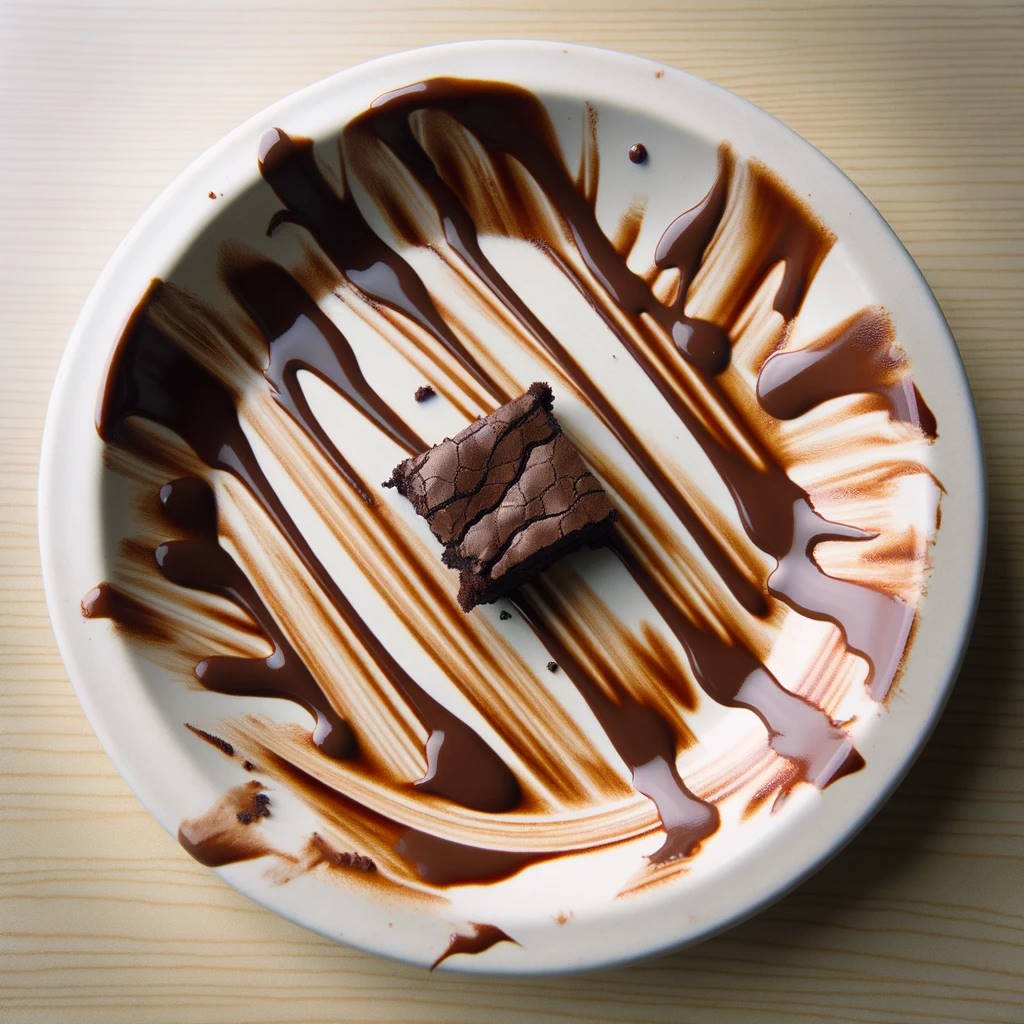I was at Cream Centre with my father on a Sunday afternoon. We’d finished a light lunch and were debating dessert. (He has triglycerides. I have cholesterol.) This was my fifth visit this year, and I had abstained so far. I couldn’t any longer.
I ordered a Sizzling Brownie Sundae. But not for reasons you might think.

Expertise comes from experience. I scrape food more than 99% of the people I know. So, I consider myself an expert. Here’s a guide on the art of scraping.
Why scrape food?
- You get to eat every last bit
- Food isn’t wasted
- You can eat longer (and no do whatever else you have to)
- It’s a motivating challenge to get every last bit
- Bonus: It annoys people
What foods are scrapable?

Semi-solids are the easiest to scrape. The best kind is the cohesive semi-solid. It’s sticky but sticks to itself more than the vessel. These are usually foods that solidify over time. Examples include:
- Baked cheese. It’s great when cheese falls off the pizza or pasta on to the plate. You can scrape it off of your (or others’) plates.
- Molten chocolate. It has the added bonus that you can lick it at the end, too.
- Pasta water (or noodles water). It eventually thickens into something scrapable.
- Spreads like peanut butter, Nutella, jam, chutney. Especially on the sides of the glass bottles they come in.
- Others like yogurt, cake batter, dried tomato sauce, mashed potatoes, hardened honey on ice cream, … the list is endless!
Avoid crumbly stuff. These stick to the vessel but become brittle and break when scraped. This includes toast, pizza, biscuits, rice, muffins, pie, quiche, cookies, etc. You could pick large crumbs and lick small crumbs in shallow vessels. But scraping them and pouring into your mouth might be the best overall strategy for this category.
Avoid loose stuff. They’ll fall off from your knife or fork, or melt when scraped. This includes curd, whipped cream, custard, panna cotta, soft jelly, tiramisu, soft boiled eggs, etc. Licking is a better strategy here.
You could combine the crumbly stuff with loose stuff to create a cohesive mix. Add curd to granola. Add whipped cream to biscuit crumbs. Add curd to pizza crumbs (and since I eat Maggi with curd, this makes sense). This makes it a lot more scrapable.
What vessels to pick?
Shape: Flat, smooth vessels are the best (e.g., ceramic or wooden plates or bowls.) Avoid deep vessels like glasses, especially curved ones. They’re hard to get a long scrape against. Definitely avoid vessels with ridges. Disposable plastic containers like below are among the worst. Food gets stuck in the ridges and since there are a dozen ridges on each side, you have to scrape 48 times just for a first pass. (This might be a good challenge, though.)

Material: Hard vessels are better than soft ones. Prefer wood, metal, ceramic, and hard plastic. Avoid thin plastic that bends. Avoid paper (it bends and soaks). Banana leaves tear when scraped.
Avoid non-stick vessels. The coating wears off when scraping.
What to scrape with?
Knives are the best. They are sharp enough to separate the food from the vessel and flat enough that you can pile enough food on top of it.
Forks are OK. Their edges can scrape reasonably well, and their tips can poke into corners. But it’s hard to pile up much food to pick up.
Spoons not ideal. They aren’t sharp enough, and too curved for scraping long slices. But if you want to take your time with it, they’re great.
The sizzling chocolate brownie
My dish arrived. Burning with chocolate. My father just had some brownie, leaving all the molten chocolate to me. On a flat wooden plate. With a knife. For an hour.
Heaven.
